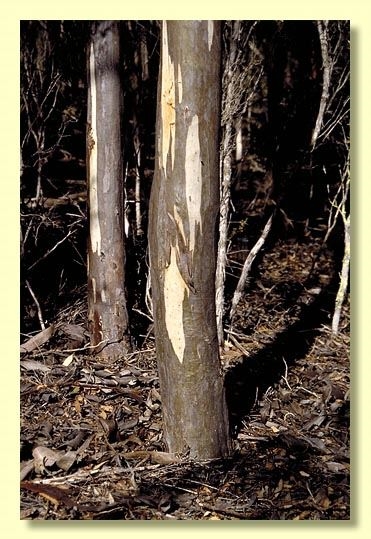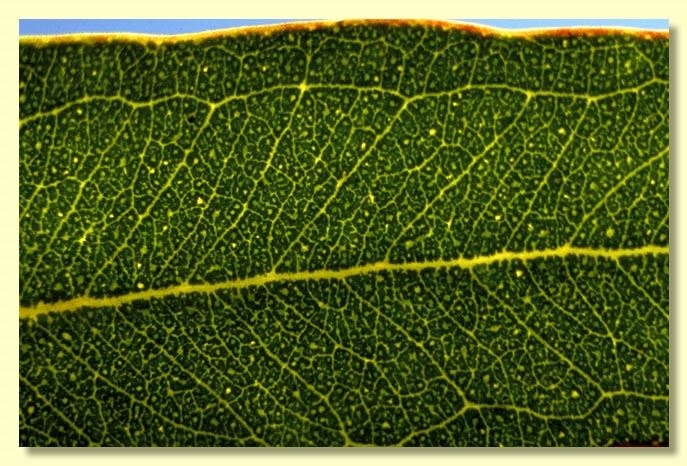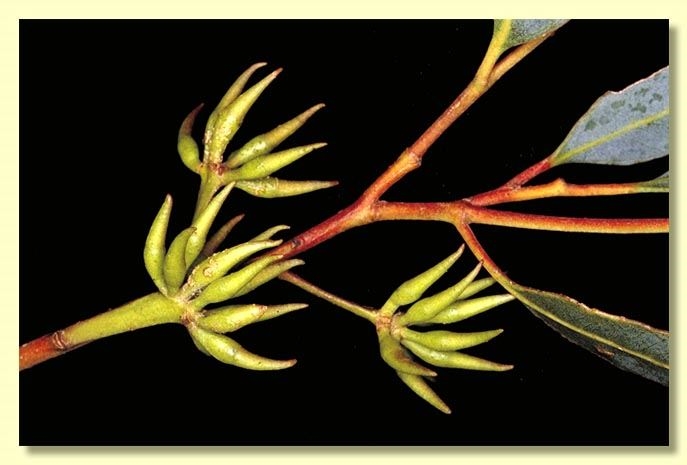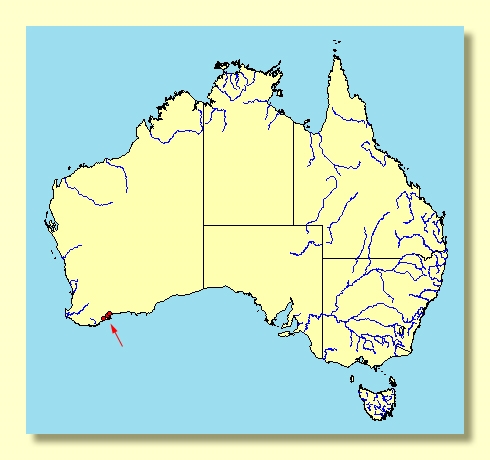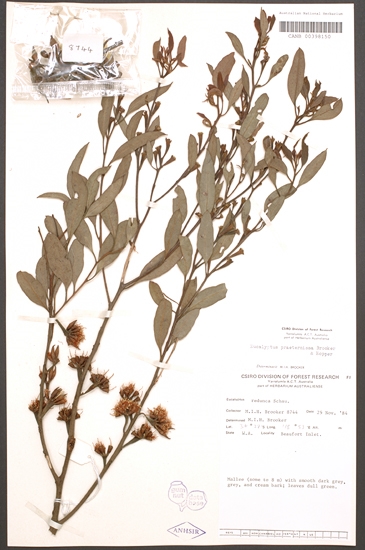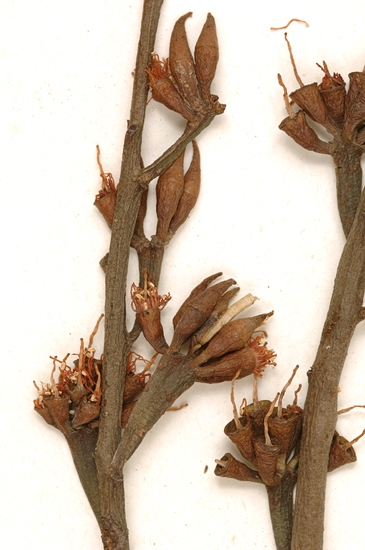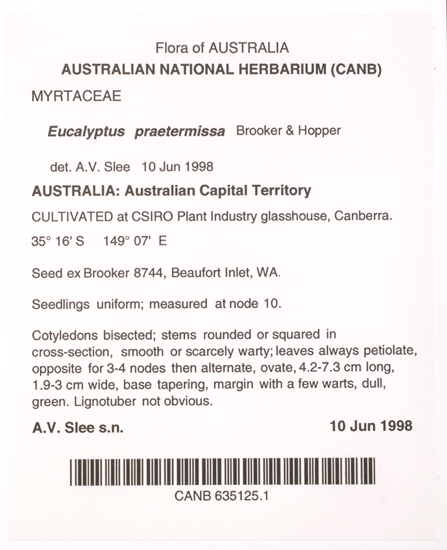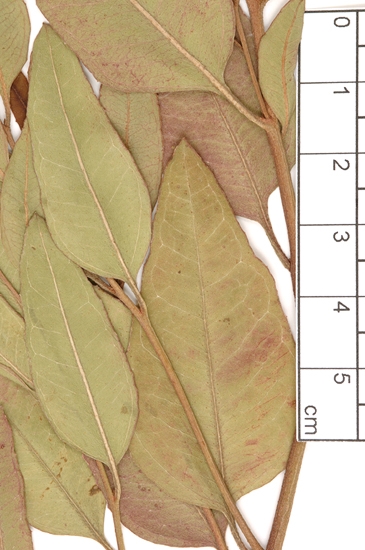Eucalyptus | Symphyomyrtus | Bisectae | Glandulosae | Levispermae | Cubiformes
Euclid - Online edition
Eucalyptus praetermissa
Bark wholly smooth, pinkish grey over whitish grey, shedding in scaly curls which may persist on scattered horizontal bark scars on the trunk.
Branchlets with few or no oil glands in the pith.
Juvenile growth (coppice or field seedlings to 50 cm): stems rounded in cross-section; juvenile leaves always petiolate, alternate, 4–7 cm long, 1.5–3 cm wide, blue-green to green.
Adult leaves alternate, petioles 0.8–1.7 cm long; blade lanceolate, 5–10 cm long, 1–2 cm wide, base tapering to petiole, margin entire, apex acute, concolorous, dull, green, side-veins greater than 45° to midrib, reticulation moderate to dense, intramarginal vein well in from margin, oil glands island and intersectional.
Inflorescence axillary unbranched, peduncles widening apically, 1–1.8 cm long, buds ?9 to 15, pedicellate (pedicels 0.2–0.4 cm long). Mature buds fusiform and sometimes slightly curved (1.1–1.5 cm long, 0.25–0.4 cm wide), scar present, operculum conical and attenuate, about twice as long as the hypanthium and equal to it in width at the join, few outer stamens erect, most stamens variably deflexed, anthers oblong, versatile, dorsifixed, dehiscing by longitudinal slits, style long and straight, stigma blunt to tapered, locules 3(4), the placentae each with 4 vertical rows of ovules. Flowers creamy white to pale yellow.
Fruit pedicellate (0.2 cm long), cylindrical to barrel-shaped, 0.6–0.8 cm long, 0.4–0.6 cm wide, disc descending vertically, valves 3(4), near rim level.
Seeds pale brown to straw coloured, 0.7–1.7 mm long, sub-spherical to cuboid, surface smooth, hilum ventral/terminal.
Cultivated seedlings (measured at node 10): cotyledons Y-shaped (bisected); stems rounded to square in cross-section, smooth to slightly warty; leaves always petiolate, opposite for 3 or 4 nodes then alternate, ovate, 4–7.5 cm long, 1.8–3 cm wide, margins irregular with warts, dull green, becoming glossy at upper nodes.
Flowering has been recorded in January and November.
A mallet endemic to Western Australia, known from the north side of Beaufort Inlet on the southern coast, on typical coastal grey sand over laterite, and forming extensive populations in Fitzgerald River National Park on spongiolite colluvium (fide Nathan McQuoid). The trunk is basically smooth but often with loosely held fragments of dead bark on the lower part. Black horizontal insect scars are sometimes present. The adult leaves are dull green.
Eucalyptus praetermissa belongs to Eucalyptus subgenus Symphyomyrtus section Bisectae subsection Glandulosae because the cotyledons are bisected, buds have an operculum scar and the branchlets have oil glands in the pith. Within this subsection E. praetermissa is one of a group of 14 species that form series Levispermae subseries Cubiformes, characterised by having smooth almost cuboid to sub-spherical seed (not spherical), flattened peduncles that widen apically and buds that are narrowly fusiform with some stamens erect and others variably deflexed.
E. praetermissa is distinguished from other mallet species in the area by the narrowly fusiform buds to 1.5 cm long and the bark. Its closest relative, E. melanophitra, has similar buds but differs in the blackish rough trunk and occurs on lateritic breakaways in the Boxwood Hill to Corackerup Creek area. E. clivicola differs in having glossy green adult leaves.


